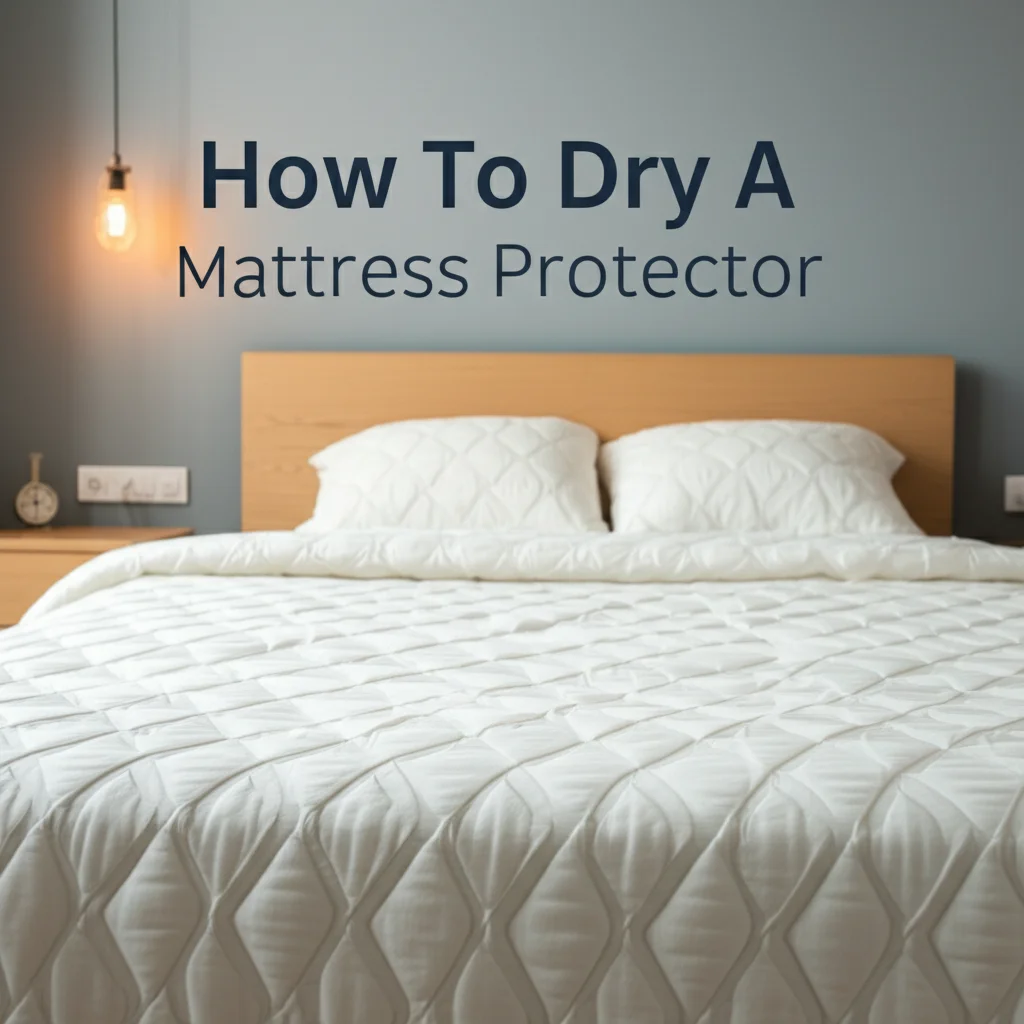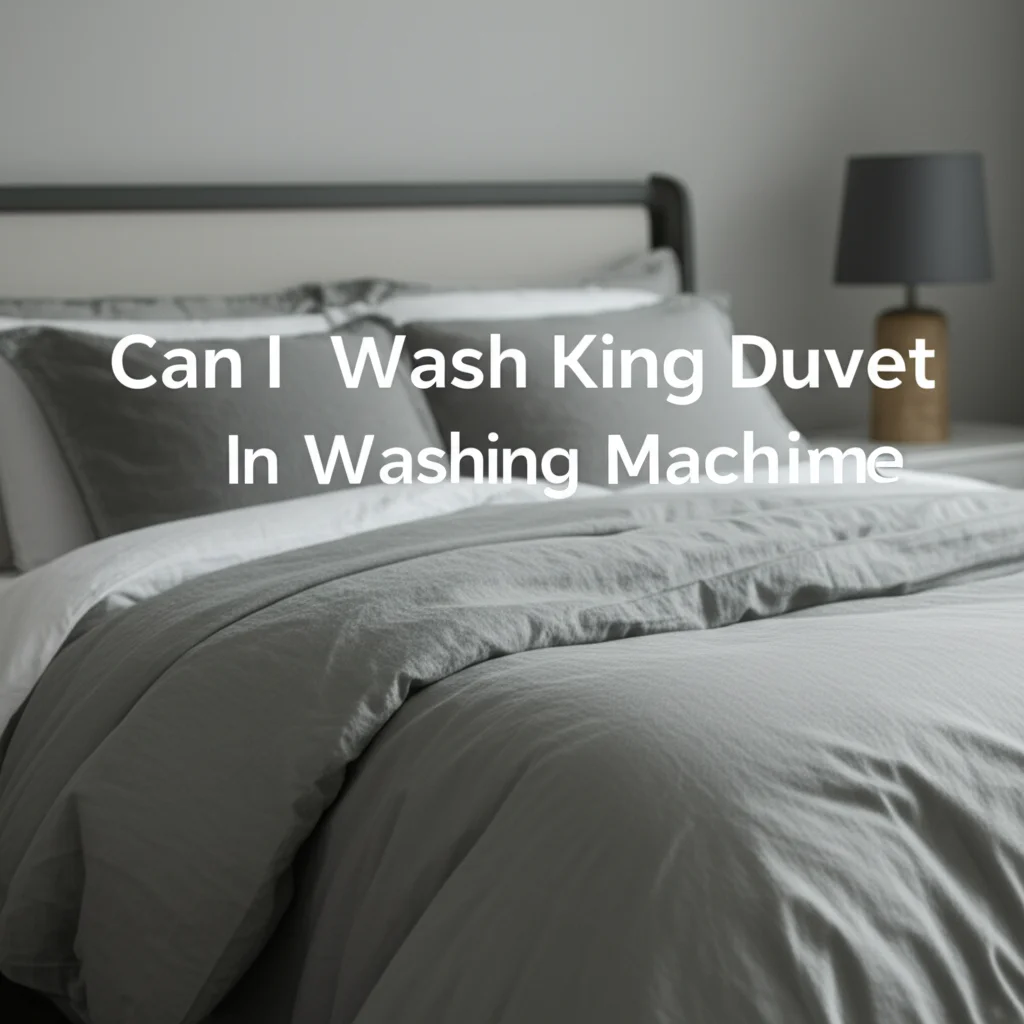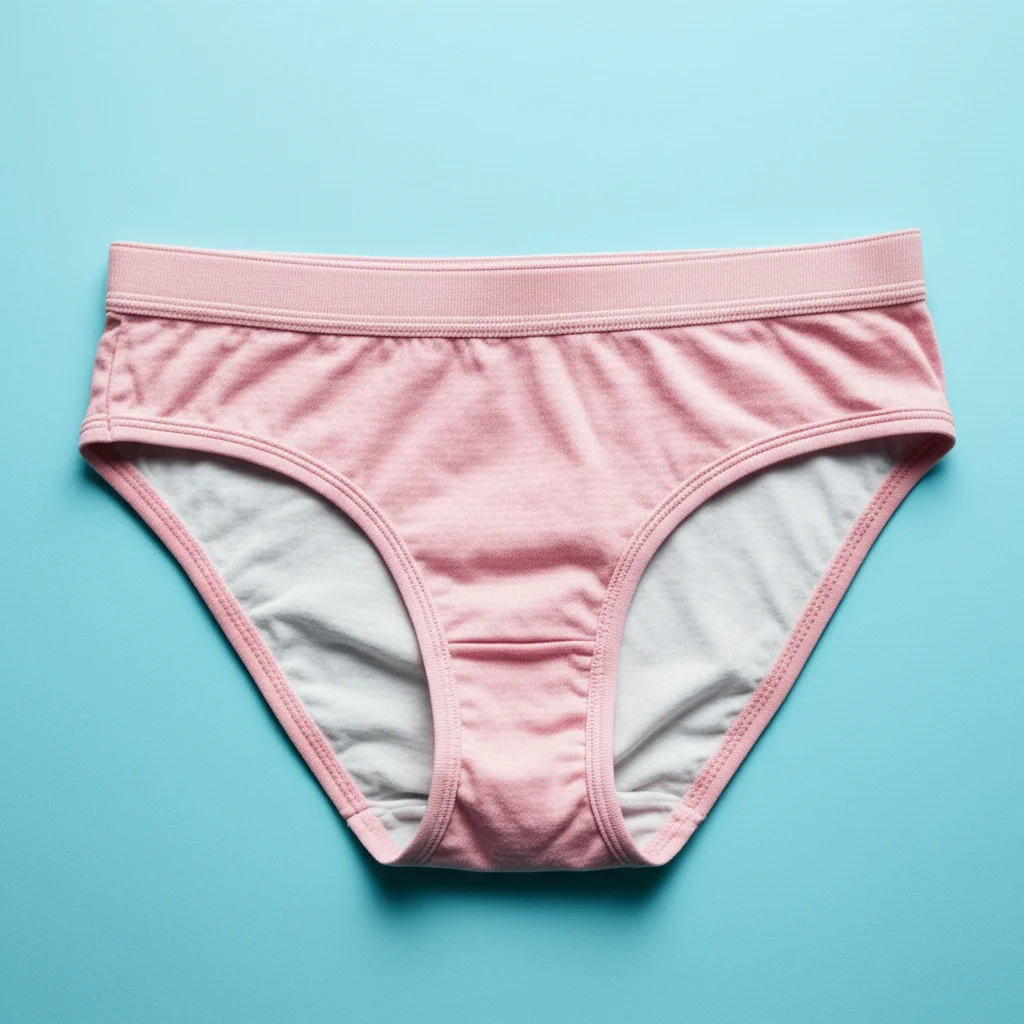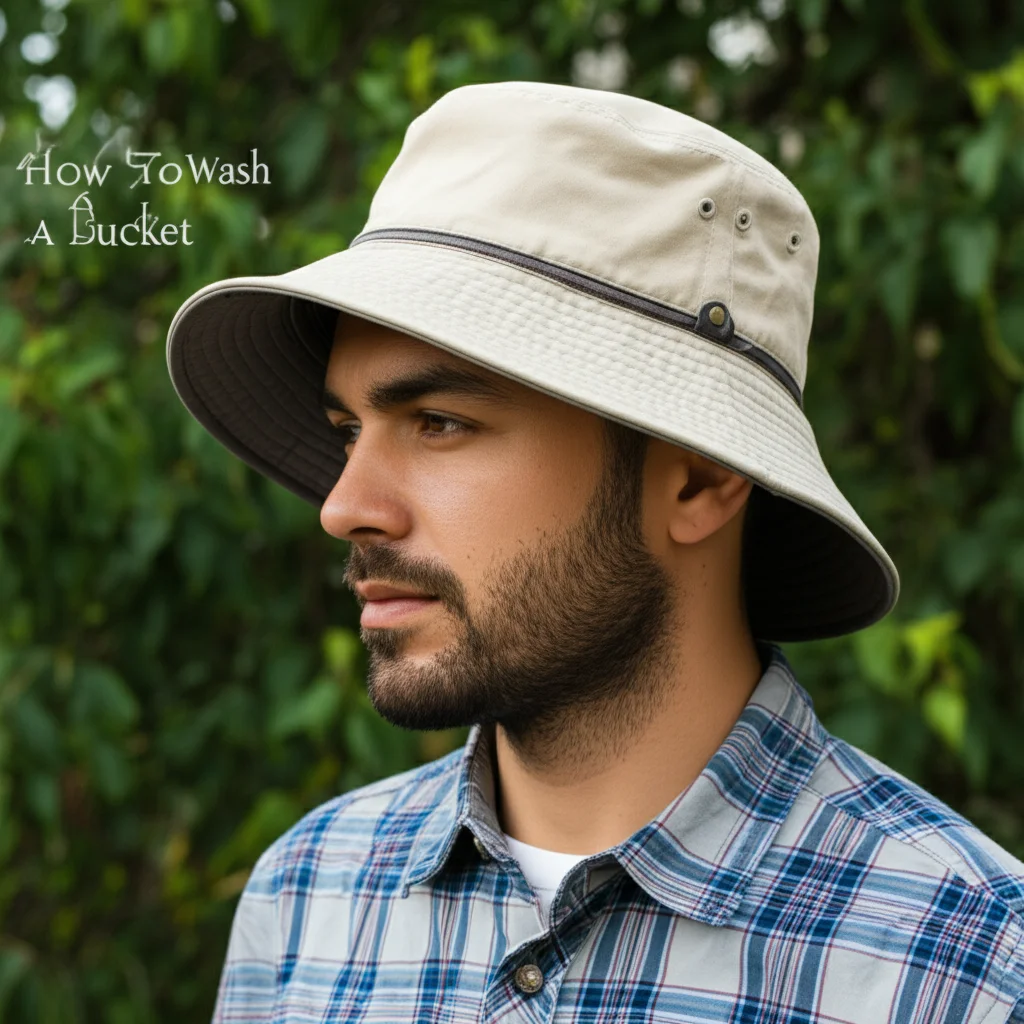· Todd Martin · Home Care · 18 min read
How To Dry A Mattress Protector

Mastering Mattress Protector Drying for Longevity
Taking care of your mattress protector is a simple way to extend its life and keep your bed fresh. You wash it to remove dust, allergens, and spills, but the drying step is just as important. Improper drying can damage the protector, ruin its waterproof barrier, or lead to mildew. I know how frustrating it is when a perfectly good protector gets damaged by a simple laundry mistake.
This guide will show you how to dry a mattress protector correctly, whether it is a standard fabric type or a specialized waterproof one. We will cover everything from understanding care labels to choosing the right drying method. You will learn about machine drying settings, the benefits of air drying, and how to troubleshoot common drying issues. My goal is to help you keep your mattress protector in top condition, protecting your mattress for years to come.
Takeaway:
- Always read the care label before drying your mattress protector.
- Use low heat or air dry to protect delicate materials and waterproof membranes.
- Ensure the protector is completely dry to prevent mildew and odors.
Concise Answer:
To properly dry a mattress protector, always check its care label for specific instructions. Most protectors benefit from low-heat tumble drying or air drying to preserve their materials and any waterproof layers. Avoid high heat, which can damage delicate fabrics and compromise waterproofing, leading to a shorter lifespan for your protector.
Understanding Your Mattress Protector’s Material and Care Tags
Before you even think about drying your mattress protector, you must understand what it is made from. Different materials react differently to heat and drying methods. A protector made from cotton will handle heat differently than one with a delicate waterproof backing. Knowing your protector’s composition helps you choose the safest and most effective drying approach.
I always begin by checking the care tag stitched onto the protector. This small label provides vital instructions from the manufacturer. It tells you the recommended washing temperature and, more importantly for this discussion, the correct drying method. Ignoring these instructions can lead to shrinking, melting, or damaging the waterproof barrier. Trust me, I have learned this the hard way with a shrunken sheet.
Here are common materials and what to look for:
- Cotton and Terry Cloth: These are generally robust and can handle a bit more heat. However, they can still shrink.
- Polyester and Microfiber: These synthetic materials are durable but can melt or warp under high heat.
- Bamboo and Rayon: These natural fibers are soft and absorbent but require gentle care, often low heat.
- Waterproof Backing (PUL, Vinyl): This is the most crucial part to protect. High heat will cause it to melt, bubble, or crack, ruining its protective quality.
Always look for symbols indicating tumble dry settings (low, medium, no heat) or air dry instructions. If the label says “Do Not Tumble Dry” or “Air Dry Only,” always follow that advice. Proper care extends the life of your protector and keeps your mattress safe. For more general cleaning advice, you can learn how to clean mattress protector for effective results.
The Gentle Art of Tumble Drying Mattress Protectors
Tumble drying a mattress protector seems straightforward, but it requires a delicate touch. Most protectors, especially those with waterproof layers, cannot withstand high heat. High temperatures can damage the fabric fibers, cause shrinkage, or, most critically, melt the protective barrier. This melting leads to bubbling, cracking, and a loss of its primary function: keeping liquids away from your mattress. I always use the lowest heat setting available on my dryer.
When I load the protector into the dryer, I ensure it is not overcrowded. Overcrowding prevents even air circulation, leading to damp spots and longer drying times. For larger protectors, like king or queen sizes, I often add a few clean, dry towels. These towels help absorb moisture and provide cushioning, which aids in even drying and prevents the protector from balling up. This simple trick saves me a lot of re-drying time.
Low Heat Settings for Longevity
Using a low heat or “tumble dry low” setting is crucial for the longevity of your mattress protector. This setting prevents the synthetic materials in waterproof layers from degrading. It also minimizes the risk of shrinking natural fibers like cotton. While drying might take longer on low heat, it is a worthwhile trade-off for preserving your protector’s integrity. Patience really pays off here.
Here are the settings I recommend:
- Tumble Dry Low: The safest machine drying option for most protectors.
- Delicate Cycle: This cycle often pairs with low heat and a gentle tumble, further protecting the fabric.
- Air Fluff/No Heat: If your dryer has this option, it is ideal for very delicate or highly waterproof protectors. It uses room temperature air to dry the item gently.
Remember to periodically check the protector during the drying cycle. Feel for damp spots and redistribute it in the dryer. This ensures every part gets exposure to air and heat. If you have a waterproof mattress protector, it is especially important to check its unique needs when you learn how to clean waterproof mattress protector.
Common Tumble Drying Mistakes to Avoid
Avoiding common pitfalls ensures your mattress protector remains effective. Many people assume all bedding can be dried the same way, but this is a mistake with protectors. High heat is the biggest enemy, as it can cause irreversible damage. I always warn against using fabric softeners or dryer sheets with waterproof protectors.
Here are the mistakes I advise against:
- Using High Heat: This is the most damaging mistake. It can melt the waterproof membrane, leading to cracks and reduced effectiveness.
- Overloading the Dryer: A packed dryer means poor airflow. This results in uneven drying, leading to damp, mildew-prone spots.
- Using Fabric Softeners or Dryer Sheets: These products can leave a residue that clogs the pores of waterproof materials. This clogs reduces the protector’s breathability and ability to repel liquids. Stick to just detergent when washing.
- Not Checking for Dryness: Pulling the protector out while still damp encourages mildew growth. Always ensure it is completely dry before placing it back on the bed.
By being mindful of these mistakes, you can significantly extend the life and effectiveness of your mattress protector. Proper drying is a small effort that yields big returns in terms of mattress protection and hygiene.
Air Drying Your Mattress Protector for Best Results
Air drying is the most gentle method for drying a mattress protector. It uses no heat, so there is zero risk of damaging delicate materials or waterproof membranes. While it takes longer than machine drying, it is the safest option for maintaining your protector’s integrity and extending its lifespan. I often choose air drying for my own protectors because of these benefits.
Air drying is also an energy-efficient choice. It saves electricity and reduces your carbon footprint, which is a nice bonus. Plus, fresh air can help naturally deodorize your protector, leaving it smelling extra clean. This method is especially recommended for protectors labeled “Air Dry Only” or “Do Not Tumble Dry.”
Line Drying Outdoors
If you have access to an outdoor space, line drying is an excellent option. The sun and fresh air work wonders for drying and sanitizing your mattress protector. I love the way laundry smells after it has been line dried. However, you must be careful about direct, intense sunlight.
Here is how I line dry:
- Choose a Sunny, Breezy Day: Ideal conditions for quick and effective drying.
- Hang Evenly: Drape the protector over a clothesline or a sturdy rack, ensuring it is spread out as much as possible. This promotes even airflow and prevents creasing.
- Flip Periodically: Turn the protector every few hours to expose all sides to the air. This helps dry both sides, especially important for waterproof layers.
- Avoid Intense Direct Sunlight (for waterproof protectors): While sun is good, prolonged exposure to harsh UV rays can degrade waterproof materials over time. If possible, dry in a shaded, breezy area or bring it in once mostly dry.
Line drying not only dries your protector but also leaves it with a naturally fresh scent. It is a fantastic option when the weather allows.
Indoor Drying Racks and Flat Drying
When outdoor line drying is not an option, indoor drying racks or flat drying surfaces work well. These methods are perfect for apartments or during bad weather. They still provide the gentle, heat-free drying your mattress protector needs. I often use my spare bedroom for this purpose.
Here are the steps for indoor drying:
- Use a Sturdy Drying Rack: Unfold the protector as much as possible over the rungs of a collapsible drying rack. Ensure good air circulation around it.
- Rotate and Flip: Just like line drying, periodically rotate and flip the protector on the rack. This helps dry both sides and prevents damp spots.
- Flat Drying: For very delicate or heavy protectors, lay them flat on a clean, dry surface, like a bed or floor covered with a clean sheet. This prevents stretching or damage from hanging.
- Ensure Good Airflow: Place the drying rack or flat-drying area in a well-ventilated room. Opening windows or using a fan can significantly speed up the drying process.
- Consider a Dehumidifier: In humid environments, a dehumidifier can help pull moisture from the air, making indoor drying faster and more effective.
Indoor air drying may take longer than machine drying, sometimes 12-24 hours or more. Patience is key to ensuring your protector is thoroughly dry. This prevents any mildew growth once it is back on your mattress.
Drying Waterproof Mattress Protectors: Special Considerations
Drying a waterproof mattress protector requires particular care to maintain its effectiveness. These protectors typically feature a thin, waterproof membrane, often made of polyurethane laminate (PUL) or vinyl. This layer is highly sensitive to heat and can be easily damaged. My personal rule is always to err on the side of caution with these items.
When machine drying, very low heat or an “air fluff” setting is essential. High heat will cause the waterproof backing to melt, bubble, or crack, rendering it useless. You will notice the material becoming crinkly or stiff. This damage is irreversible, and your protector will no longer protect your mattress from spills. Air drying is often the safest and most recommended method for these specialized protectors.
Here are my top tips for drying waterproof mattress protectors:
- Prioritize Air Drying: Whenever possible, air dry your waterproof protector. Hang it on a clothesline outdoors on a breezy day or lay it flat on an indoor drying rack. Ensure maximum air circulation around both sides.
- Low Heat Tumble Dry (If Necessary): If you must machine dry, use the absolute lowest heat setting available, often labeled “air fluff” or “no heat.” Even a low heat setting can sometimes be too much for the most delicate membranes.
- Add Dry Towels: Throwing a few clean, dry towels into the dryer with the protector can help absorb moisture and prevent the protector from clumping. This also provides some cushioning to protect the waterproof layer.
- Check Frequently: Periodically remove the protector from the dryer to check its dryness and feel the waterproof layer. If it feels warm, or if you notice any changes in its texture (like bubbling), remove it immediately.
- Flip Inside Out: Some manufacturers recommend flipping the protector inside out before drying. This exposes the waterproof layer more directly to the air, potentially speeding up drying while protecting the outer fabric.
- Avoid Overdrying: Remove the protector as soon as it is dry. Overdrying, even on low heat, can stress the materials and shorten the protector’s lifespan.
Remember, the goal is to dry the fabric without compromising the delicate waterproof barrier. Treating it gently ensures it continues to protect your mattress from spills and accidents. For a comprehensive guide on washing these specific items, refer to how to clean waterproof mattress protector.
Dealing with Damp Spots and Ensuring Complete Dryness
One of the biggest mistakes I see people make is taking a mattress protector out of the dryer before it is fully dry. It may feel mostly dry, but even slightly damp spots can lead to big problems. Dampness creates a perfect breeding ground for mold and mildew, leading to musty odors and potentially unhealthy sleeping conditions. Always aim for bone-dry.
Waterproof protectors are especially prone to retaining moisture due to their non-breathable layer. The waterproof barrier can trap moisture between its layers, making it challenging to dry completely. This is why thorough checking and proper air circulation are so important. I always do a double-check before putting it back on the bed.
The “Flip and Fluff” Method
The “flip and fluff” method is a simple yet effective technique for ensuring even drying in the machine. This is particularly useful for bulky items like mattress protectors that can clump up in the dryer. I use this method frequently, and it really helps.
Here is how it works:
- Set a Timer: Every 15-20 minutes, pause your dryer cycle.
- Remove and Inspect: Take the mattress protector out of the dryer.
- Flip and Shake: Give it a good shake to unbundle any tangled areas. Flip it inside out or turn it over to expose different surfaces to the heat.
- Feel for Damp Spots: Pay close attention to the corners, edges, and the area around the elastic. These areas often take longer to dry.
- Return to Dryer: Place the protector back in the dryer, ensuring it is spread out as much as possible.
This method helps moisture escape efficiently and ensures all parts of the protector receive adequate heat or airflow. It reduces overall drying time and prevents localized dampness.
Preventing Mildew and Musty Odors
Prevention is always better than cure when it comes to mildew. A fully dry mattress protector will not grow mildew. However, if you store or use a damp protector, you will likely encounter these unpleasant issues. I have had to re-wash items because I pulled them out of the dryer too soon.
To prevent mildew and musty odors:
- Ensure 100% Dryness: This is the golden rule. Do not put the protector back on your mattress or store it in a closet if there is any hint of dampness. If in doubt, give it another cycle on low heat or more air drying time.
- Provide Ample Airflow: When air drying, make sure the drying area is well-ventilated. Using a fan can significantly help air circulation.
- Avoid Overcrowding: In the dryer, give your protector space to tumble freely. On a drying rack, avoid draping other items on top of it.
- Regular Cleaning: Clean your mattress protector regularly, according to manufacturer instructions. This prevents accumulation of moisture-retaining dirt and body oils.
- Store Properly: Once completely dry, fold your mattress protector and store it in a dry, airy linen closet. Avoid damp basements or humid storage areas.
By following these steps, you will keep your mattress protector fresh, clean, and free from any unwanted odors or mildew. This also ensures your mattress itself stays cleaner. For tips on keeping your mattress pristine, explore how to clean stains from a mattress.
The Importance of Thorough Drying for Mattress Protector Longevity
Drying your mattress protector completely is not just about avoiding mildew; it is about protecting your investment. A properly dried protector lasts longer and performs better. Think about it: if you take shortcuts in the drying process, you might save a few minutes, but you risk damaging the very thing designed to protect your expensive mattress. I always see it as a small effort for a big gain.
The delicate fibers and specialized layers within a mattress protector are designed for durability, but they have limits. High heat or incomplete drying breaks down these components over time. This leads to premature wear, reduced effectiveness, and ultimately, the need to replace your protector much sooner than anticipated. My goal is always to maximize the life of my bedding.
Here is how thorough drying contributes to longevity:
- Preserves Waterproofing: The most critical aspect for waterproof protectors. Gentle, complete drying prevents the waterproof membrane from melting, cracking, or degrading. This ensures it continues to block spills and accidents effectively.
- Maintains Fabric Integrity: Overheating can cause fabrics to become brittle, shrink, or lose their soft texture. Proper drying keeps the fabric strong, soft, and comfortable. It also prevents elastic bands from losing their stretch.
- Prevents Mold and Mildew: As discussed, dampness is a breeding ground for these harmful organisms. Thorough drying eliminates this risk, keeping your protector hygienic and odor-free. Mold and mildew can weaken fabric and cause permanent stains.
- Extends Product Lifespan: By following care instructions and drying correctly, you significantly extend the useful life of your mattress protector. This saves you money in the long run by reducing the frequency of replacements.
- Ensures Continued Protection: A damaged or shrunken protector may not fit your mattress properly or offer full coverage. Proper drying ensures it remains the correct size and shape, providing maximum protection for your mattress. Once your protector is dry, you can easily learn how to put on a mattress protector to get your bed ready.
Treating your mattress protector with care during the drying process is a testament to its value in protecting your sleep environment. It is a simple step that yields significant benefits in terms of hygiene, comfort, and financial savings.
Troubleshooting Common Drying Problems
Even with the best intentions, you might run into issues when drying your mattress protector. Understanding common problems and their solutions can save you frustration and prevent damage. I have encountered several of these myself and found quick fixes.
Here are some typical drying problems and how to solve them:
- Problem: Protector is still damp after a full cycle.
- Solution: This often happens if the dryer is overcrowded or if the protector is bunched up. Remove other items, use the “flip and fluff” method, and add a few dry towels to absorb extra moisture. Extend the drying time on a low-heat setting or switch to air drying.
- Problem: Waterproof layer feels crinkly, bubbled, or melted.
- Solution: This is a sign of heat damage. Unfortunately, once the waterproof membrane melts or bubbles, the damage is usually irreversible. To prevent this, always use the lowest heat setting or air dry for waterproof protectors. Check the care label carefully.
- Problem: Protector has shrunk.
- Solution: Shrinkage usually occurs due to high heat, especially with cotton or natural fiber protectors. If it has already shrunk, there is little you can do to reverse it. Prevent future shrinkage by always using low heat or air drying.
- Problem: Protector has a lingering musty smell.
- Solution: A musty smell means the protector was not fully dry before storage or use, leading to mildew. Rewash the protector with a cup of white vinegar added to the wash cycle (instead of detergent, or with half detergent). Then, dry it completely, ensuring no damp spots remain. Air dry it in direct sunlight if possible, as UV rays help kill mildew spores.
- Problem: Dryer sheets or fabric softener left residue.
- Solution: If you notice a greasy or slick residue, especially on the waterproof layer, it means fabric softener or dryer sheets were used. These can clog the protector’s pores. Rewash the protector without any softeners or dryer sheets. Air dry it to ensure thorough removal of residue without further heat damage.
Addressing these issues promptly helps maintain your mattress protector’s performance and extends its life. Prevention through proper drying techniques is always the best approach.
Frequently Asked Questions (FAQ)
Can you put a mattress protector in the dryer?
Yes, most mattress protectors can go in the dryer, but you must use the correct settings. Always check the care label first. Typically, a low heat or “tumble dry low” setting is recommended. High heat can damage the fabric, cause shrinking, or melt waterproof layers. Air drying is always the safest alternative for delicate materials.
How long does a mattress protector take to air dry?
Air drying a mattress protector can take anywhere from 6 to 24 hours, depending on its material, thickness, and the humidity levels. Thicker protectors or those with waterproof layers will take longer. Ensure good air circulation around the protector by using a well-ventilated area or a fan to speed up the process.
What happens if you dry a waterproof mattress protector on high heat?
Drying a waterproof mattress protector on high heat will likely damage or melt its waterproof membrane. This damage appears as bubbling, cracking, or a crinkly texture. Once damaged, the protector loses its ability to block liquids, making it ineffective. This damage is usually permanent.
How often should I dry my mattress protector?
You should dry your mattress protector every time you wash it, which is typically every 1-2 months, or more frequently if spills or accidents occur. Regular washing and proper drying prevent the buildup of allergens, dust mites, and odors, maintaining a hygienic sleep environment and prolonging the protector’s life.
Can I use dryer sheets with a mattress protector?
It is generally not recommended to use dryer sheets or liquid fabric softeners with mattress protectors, especially waterproof ones. These products can leave a residue that clogs the pores of the fabric and can degrade the effectiveness of the waterproof barrier. This can reduce the protector’s breathability and ability to repel liquids.
Conclusion
Properly drying a mattress protector is a simple yet crucial step in maintaining a clean and protected sleep environment. We have covered the importance of understanding your protector’s material and following care instructions, especially for delicate waterproof layers. Using low heat for tumble drying or opting for gentle air drying methods ensures your protector lasts longer and performs its job effectively. Remember, patience is key, as thorough drying prevents mildew and preserves the protector’s integrity.
By applying these drying techniques, you are not just drying an item of bedding. You are actively extending the life of your mattress protector and safeguarding your mattress from spills, allergens, and wear. Take the extra moment to dry it right, and your mattress protector will continue to provide reliable protection for many years. Make proper drying a standard part of your laundry routine.
- mattress protector drying
- bedding care
- laundry tips
- waterproof mattress protector
- home cleaning
- fabric care





